Bruce Hill - Southern Football Netball League
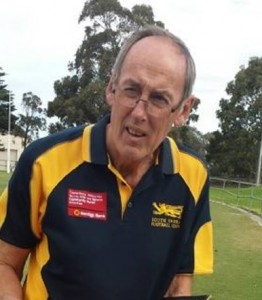
You would be hard pressed to find a man who has contributed more to local football than Bruce Hill.
For nearly 50 years, Hill has experienced the highs and lows as a player, administrator and volunteer and has given invaluable service to two SESFL/SFNL clubs. In the process, he has amassed a list of honours, awards and achievements the length of Flemington straight.
His playing career alone is extraordinary, having featured in over 750 senior matches across various competitions in a career that continued until his mid 60s.
In his prime, Hill was a tall centreman with pace to burn. He debuted with East Malvern in 1967, playing 301 games for the club and winning seven Best and Fairest awards along the way, including an incredible six in a row between 1967 and 1972.
He was also acting captain of East Malvern’s 1969 premiership team and claimed the SESFL Division Two Best and Fairest in the same year.
When East Malvern disbanded due to financial difficulties after the 1984 season, Hill became a bit of football nomad, playing with several clubs outside the SESFL/SFNL between 1985 and 1994.
In 1995 he went down to T.H. King Oval where South Yarra were playing at the time to ask if he could play one final game with them on the same ground he that he made his debut with East Malvern.
“And I’m still there 20 years later!” Hill said with a laugh.
He eventually played 145 matches for the Yarras’ reserves and thirds sides, and even captained the magoos at the ripe old age of 50.
But despite his impressive list of playing achievements, it’s Hill’s mountain of off-field work that is most noteworthy.
He was secretary of East Malvern from 1969 until the club folded, during which time it had grown from one senior team to having two senior and eight junior sides.
And it was the demise of his beloved club that spurred him on to devote almost his entire life to community football.
“I learnt after East Malvern folded that I didn’t ever wanted to be involved in anything like that again so I guess it’s just a matter of trying to keep things going,” Hill said.
“I know what it’s like for just myself personally not to have a club where you’ve played 300 games and won seven Best and Fairests to go back to with a few bragging rights because the club doesn’t exist anymore.”
It comes as no surprise then that Hill was instrumental in reforming South Yarra after their recess in 2006.
Hill has also been actively involved in the SESFL and SFNL since 1969 as ladder secretary, statistician and historian, and was a former Division Two scribe for the SFNL Record for more than a decade during the 1990s and 2000s.
He is currently serving a second stint as Yarras president (his seventh year in the role) and there are no signs of slowing down for this self-confessed “footy nut”.
- By Will Hunter
John Bennett - Southern Football Netball League
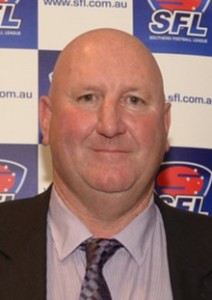
There is no doubting that John Bennett is larger than life.
He cut an imposing figure on the field during his playing days at East Brighton and he is a wonderful character off it.
After a taste of top level footy with St Kilda and Footscray in the 1980s, he then joined Sandringham and won their goal kicking award in 1987 and 1988.
Bennett then returned to his junior club East Brighton in 1990 and dominated for the next decade as playing coach, in the process becoming one of the greatest players the SFNL has seen.
Standing at full-forward the powerfully-built Bennett was an unbeatable goalkicking machine. But he was also versatile enough to have a run in the guts and booted 60 goals in one season playing out of the centre.
“I was captain coach – I could play where I wanted to!” Bennett joked.
After two premierships at the Vampires, he took over the reigns as coach of battling second-division club Heatherton in 2002 where he has been a revelation.
In Bennett’s eight-year stint in charge of the Tunners he led them to two flags, before stepping aside to take up roles as Vice President and Football Manager – positions he still holds. And his influence in turning the downtrodden club around cannot be overstated.
Over his 17-year SFNL coaching career, Bennett finished with four premierships from seven grand finals, earning him selection as the coach (he was also picked as a player at full forward) of the SFNL’s team of the past two decades.
The popular Bennett was also a member of the SFNL’s radio team for five years until he gave it away at the end of last year. This was something he really enjoyed, and has not ruled out a return to the airwaves down the track.
“I loved the radio show it was great fun,” Bennett said.
“I tried to make it more than just people listening to scores and that... just trying to have a bit of fun with all the clubs without making it too serious.
“That’s what footy’s all about – having a good time.”
In such high esteem is Bennett held by the SFNL they have named the Division Two Senior Grade Best and Fairest medal in his honour and his induction into the Hall of Fame is another just reward for one of footy’s great characters.
- By Will Hunter
To watch the video special The John Bennett Story CLICK HERE
Peter Martin - Southern Football Netball League
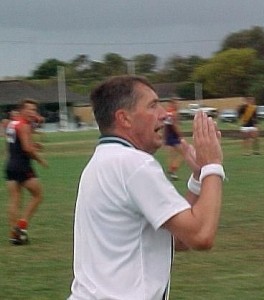
Umpiring can often be a thankless task. Very rarely are the whistle-blowers commended by punters and players when the correct decision is made, but there is no shortage of yobbos over the fence to air their grievances in a vitriolic manner when a mistake occurs 10m out from the opposition’s goal.
Peter Martin has seen it all and heard just about every sledge in the book during his 36 years as a senior umpire and throughout the decades he’s become one of the most popular umpires in local footy.
Martin’s playing career with East Kew in the ESCFA was cut short after a life-threatening car accident in 1978 and he picked up the whistle the following year. He has since officiated well in excess of 750 matches of ESCFA/SESFL/SFNL football.
He has also provided invaluable service to the Umpires Association in an off-field capacity, serving 14 years as President, Secretary and Treasurer.
But it’s Martin’s on-field persona that has seen him earn universal admiration and respect from the entire SFNL community. He has never shied away from admitting his mistakes and he enjoys the constant communication with players, which he says is one of the things that keeps him going.
“(The main reason I) continue to umpire is the camaraderie and banter that exists between the umps and between umpires and players,” the popular officiator said.
He is also a ripping bloke off the ground too. A colourful and charismatic story-teller, Martin has built up a treasure-trove of cracking yarns throughout his umpiring career which he is only too happy to share. Like the time he marked out the centre circle at Balwyn with a 5kg bag of sugar after the rain had washed the paint away.
“And then 80,000 European wasps had arrived!” Martin chuckled.
He will also laugh recounting some of the wittiest and funniest sledges he has received over the years, almost of which are unprintable.
Martin’s passion and drive for umpiring shows no signs of abating and you can expect to see him continue in orange for a while yet.
“I have the best seat in the ground for the greatest game on earth,” Martin said.
“I live for footy, I love my footy, I’ve been around a very, very long time, I’ve seen it all and I hope I’m around for a lot longer.”
- By Will Hunter
Kevan ‘Icy’ Hamilton - Federal Football League
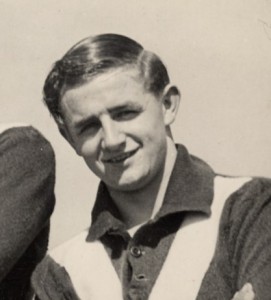
Few players have dominated the Federal Football League quite like Kevan ‘Icy’ Hamilton did.
A tall, damaging rover that was super-dangerous up forward, Icy was a true old-school footballer that had the potential to be a champion at the highest level. But the ever-humble Hamilton never really enjoyed the spotlight of the big league, instead preferring the more laidback environment of local footy.
After beginning his career at McKinnon in 1947 aged just 14, Hamilton played a season with Melbourne’s reserves under legendary coach Norm Smith in 1955.
Hamilton was then famously cut from the Demons’ list after a verbal altercation with legendary coach Norm Smith during the 1956 preseason. Hamilton was purported to have sworn at Smith, a claim he has previously denied.
“The papers made more of a deal out of it than what it actually was,” Hamilton’s daughter, Joanne Adams, said.
“He would go around and have cups of tea with him afterwards so it wasn’t a big deal... he was friends with him afterwards.”
He joined Carlton a few weeks later and enjoyed a stellar debut season, booting eight goals in his first two matches and finishing the year as the club’s leading goalkicker with 22 majors. But after spending the entire 1957 season in the Blues’ reserves, he was finally granted his wish for a clearance back to his original club McKinnon.
From there Hamilton then went on to become arguably the greatest player the Federal Football League has ever seen. Blessed with tremendous pace and skill, Icy was a five-time recipient of the J W Allnutt Trophy as the League’s fairest and best player (including winning four in a row between 1961 and 1964).
But his biggest asset was his lethal right foot. With an uncomplicated, fluid action, he was a beautiful kick of the football and rarely missed a target. He could give the ball a mighty roost as well, and regularly practiced having shots at goal from the centre of the footy ground with his older brother. Hamilton also once won a long kicking contest at the Williamstown football oval in 1956 with massive 75-yard (68.5m in the current measurement) bomb.
After his playing career ended, his good friend Tom Hafey asked him to join Richmond as kicking coach in 1975. Hamilton gladly accepted and spent three years at Tigerland with T-shirt Tommy.
Despite compiling an outstanding football CV over the years, Hamilton’s modest nature meant he was always reluctant to talk about his achievements. But his induction in to the SFNL Hall of Fame will ensure that his name is forever remembered as one of the greatest footballers of a bygone era.
- By Will Hunter
Ashley ‘Tommy’ Goodes - Southern Football Netball League
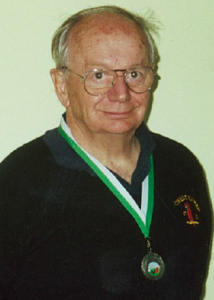
Ashley Goodes was known as ‘Tommy’ due to his diminutive stature, which resulted in him being compared to Tom Thumb, but his achievements as a Cheltenham football club player and as an administrator were far from small.
Goodes’ playing career for the Rosellas spanned from 1949 to the mid 1960s. He played alongside Jack Barker and Kevin Roberts in Cheltenham’s 1958 Reserves premiership side.
A few years after he hung up the boots, Goodes began to take on various administrative roles for the Rosellas, starting in the 1970s. These included being a committeeman, Treasurer, Secretary and President. He was also on the Federal Football League board in the early 1980s and served as Vice Chairman of the SFNL board.
Goodes’ involvement in administration at Cheltenham continued until 2002 – 53 years after he started playing for the club.
Current Cheltenham President, Colin Anderson, speaks of how involved Goodes was at the club. “He was a Cheltenham person through and through and every Friday afternoon he could be found pushing the line marker around the ground and then inside the change rooms ensuring that they were in pristine condition for the teams on Saturday.”
Such was his modesty, Goodes repeatedly refused to accept nominations to become a life member of the club. He finally gave in to continued pressure and was made a life member.
He was also awarded life membership of the SFNL in 2002.
The AFL awarded a certificate to Goodes to honour his 50 years of service to the sport.
Anderson says, “Tommy was loved by all at Cheltenham,” and the club played a major part in his life, second only to family.
It is fitting to see such a devoted club man inducted into the SFNL Hall of Fame.
- By Andrew Paloczi
Stan Le Lievre - South East Suburban Football League
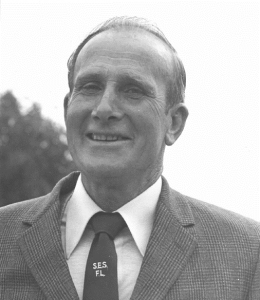
Stan Le Lievre had an outstanding and lengthy career as a player, coach and football administrator. Prior to his current induction to the Hall of Fame, his contribution to the sport had received previous recognition.
His son, Neil, speaks of an award presented to his father, which he held in high esteem. Reading from a clipping he says, “President of the South East Suburban Football League, Stan Le Lievre, has won the 1985 National Football League Merit Award for long and outstanding service to football. The prestigious NFL award is presented annually to one person in each state. Le Lievre was nominated by the Victorian Football League to commemorate a playing and administrative career which began in Katandra in the Goulburn Valley in 1935.”
Le Lievre’s long and distinguished service to Australian football was also acknowledged by the Victorian Football Union in 1977, which gave him an award.
He was President of the South East Suburban Football League (SESFL) between 1968 and 1974 and took on the role again in 1983.
Le Lievre also served in other administrative positions including Secretary of the SESFL in 1975, and two stints on the executive board for that league. He was on the Caulfield Oakleigh District Football League executive between 1957 and 1962.
As a player, his ability saw him recruited by St Kilda in 1939 after he earned an extraordinary four senior best and fairest awards for Katandra between the ages of 16 to 19. Time served during World War II prevented Le Lievre from playing for the Saints until 1945, but he went on to record 20 games for the side.
His son speaks of the day in 1947 at the Junction Oval when Le Lievre had the unenviable task of playing on Melbourne forward Fred Fanning, who recorded his famous 18-goal record for a game, which still stands.
“Dad played on him to half time and then they put someone else on him in the third quarter. He did such a bad job they put dad back on him in the last quarter,” Neil says.
Le Lievre was quoted in the Age as reflecting 50 years later, “The ball was coming down quickly from blokes like Norm Smith and Fred was a very big man, hard to get around. Somebody said I should grab hold of his footy nicks and pull them off every time the ball came down, but they would have run out of nicks.”
After finishing up at the Saints Le Lievre went on to play for Oakleigh in the VFA in 1948- and then became the inaugural coach of the newly established Oakleigh District in 1950. He was a playing coach and led the team to its first A Grade flag in 1953.
“Dad was known for driving the district players around in the back of his Plymouth Ute. That’s what you used to do to get the boys to the football in those days,” Neil reflects. He inherited this trait from his father, transporting junior players in the back of his bread truck in his days as coach of St Mary’s.
Neil says his dad “was respected by his peers”. Speaking of his father’s time at Oakleigh District, Neil says, “He was their first go to man.”
The SFNL has previously honoured Le Lievre for his vast contribution to the game by naming the medal awarded to the best on ground in Division Three Reserve Grand Finals after him, but it is appropriate that he has now been inducted into the Hall of Fame.
As Neil says, “He really loved his football.”
- By Andrew Paloczi
To read about our other Hall of Fame inductees CLICK HERE





